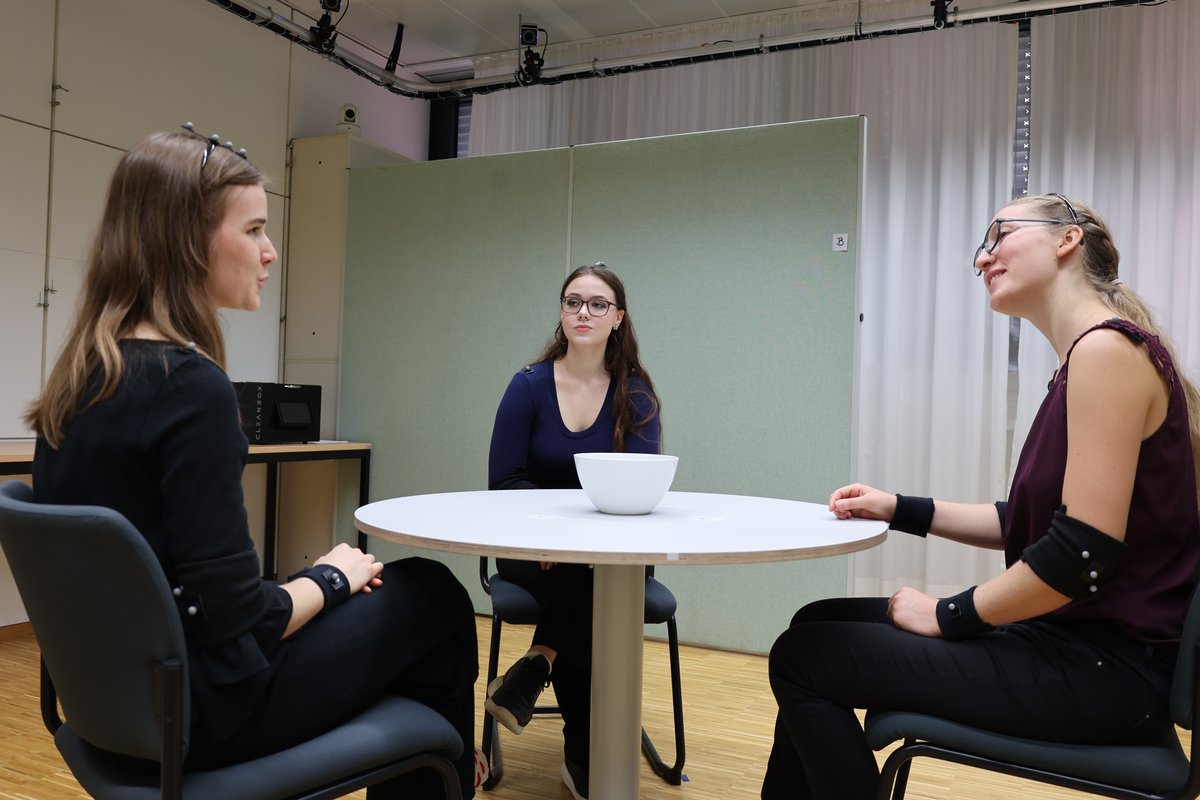The aim of behaviour observation is to systematically observe behaviour in order to gain new insights into human behaviour. One of the reasons why this method is so important is that certain behaviour can "only" be studied at all (e.g. interactions, facial expressions).
![[Translate to Englisch:] Bild zeigt Buffet mit Lebensmittelattrappen](/fileadmin/_processed_/f/c/csm_Fake_Food_komplett_1_d1069dc1da.jpg)
Fake Food
In the laboratory, we use fake food buffets, among other things, to analyse the food selection. With the fake food buffet, we can offer standardised dishes with which meals can be put together.
![[Translate to Englisch:] Bild zeigt Kamera des Verhaltensbeobachtungslabors](/fileadmin/_processed_/3/7/csm_Kamera_Videolabor_dc557753e7.jpg)
Video tracking
However, we are particularly proud of our "Behaviour Observation Studies 2.0", in which we use our video system to examine group interactions in order to gain insights into collective behaviour.
View of the behavioural observation laboratory (Collective Appetite project)
External Page
To view this content (source: www.xyz.de ), please click on Accept. We would like to point out that by accepting this iframe, data could be transmitted to third parties or cookies may be stored.
You can find more information on our privacy policy .
![[Translate to Englisch:] Bild zeigt Zuckerstreuer und Milchkännchen](/fileadmin/_processed_/c/0/csm_zuckerstreuer_von_pixabay_199d9b9f6b.jpg)
We also carry out observational studies "in the field". For example, we conducted a study in the campus café at the University of Konstanz, in which we observed sugar consumption with normal and customised sugar shakers.
Selected publications
Behaviour observation in the laboratory:
- Sproesser, G., Kohlbrenner, V., Schupp, H., & Renner, B. (2015). I Eat Healthier Than You: Differences in Healthy and Unhealthy Food Choices for Oneself and for Others. Nutrients, 7(6), 4638–4660. https://doi.org/10.3390/nu7064638
- Sproesser, G., Schupp, H., & Renner, B. (2014). The bright side of stress induced eating: Eating more when stressed but less when pleased. Psychological Science. 25(1), 58-65. https://10.1177/0956797613494849
Behaviour observation in the field:
- Villinger, K., Wahl, D. R., Engel, K., & Renner, B. (2021). Nudging sugar portions: A real-world experiment. BMC Nutrition, 7(1), 65. https://doi.org/10.1186/s40795-021-00473-9

